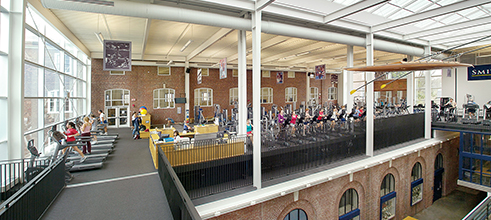Document Type
Article
Publication Date
2024
Abstract
Objective: This study determined the association between acute changes in physical activity, temperature and humidity and 24-hour subjective and objective hot flash experience.
Methods: Data collection occurred during the cooler months of the year in Western Massachusetts (October-April). Women aged 45-55 across 3 menopause stages (n=270) were instrumented with ambulatory monitors to continuously measure hot flashes, physical activity, temperature and humidity for 24-hours. Objective hot flashes were assessed via sternal skin conductance, and subjective hot flashes were recorded by pressing an event marker and data logging. Physical activity was measured with wrist-worn accelerometers and used to define sleep and wake periods. Logistic multilevel modeling was used to examine the differences in physical activity, humidity, and temperature in the 10 minutes preceding a hot flash versus control windows when no hot flashes occurred. The odds of hot flashes were considered separately for objective and subjective hot flashes as well as for wake and sleep periods.
Results: Data from 188 participants were included in the analyses. There was a significantly greater odds of a hot flash following acute increases in physical activity for objective waking hot flashes (OR=1.31, 95% CI:1.17-1.47, p< 0.001) and subjective waking hot flashes (OR=1.16, 95% CI: 1.0-1.33, p=0.03). Acute increases in the actigraphy signal were associated with significantly higher odds of having an objective (OR=1.17, 95% CI:1.03- 1.35, p< 0.01) or subjective (OR=1.72, 95% CI 1.52-2.01, p< 0.001) sleeping hot flash. Increases in temperature were significantly related to the odds of subjective sleeping hot flashes only (OR=1.38, 95% CI:1.15-1.62, p< 0.001). There was no evidence for a relationship between humidity and odds of experiencing any hot flashes.
Conclusions: These results indicate that acute increases in physical activity increase the odds of hot flashes that are objectively measured and subjectively reported during waking and sleeping periods. Temperature increases were only related to subjectively reported nighttime hot flashes.
Keywords
Physical activity, objective hot flashes, subjective hot flashes, temperature
Creative Commons License

This work is licensed under a Creative Commons Attribution 4.0 International License.
Rights
Licensed to Smith College and distributed CC-BY 4.0 under the Smith College Faculty Open Access Policy.
Version
Author's Accepted Manuscript
Recommended Citation
Witkowski, Sarah; White, Quinn; Shreyer, Sofiya; Garcia, Randi L.; Brown, Daniel E.; and Sievert, Lynnette Leidy, "Acute Increases in Physical Activity and Temperature are Associated with Hot Flash Experience in Midlife Women" (2024). Exercise and Sport Studies: Faculty Publications, Smith College, Northampton, MA.
https://scholarworks.smith.edu/ess_facpubs/46



Comments
Approved for PubMed Central, publication forthcoming.